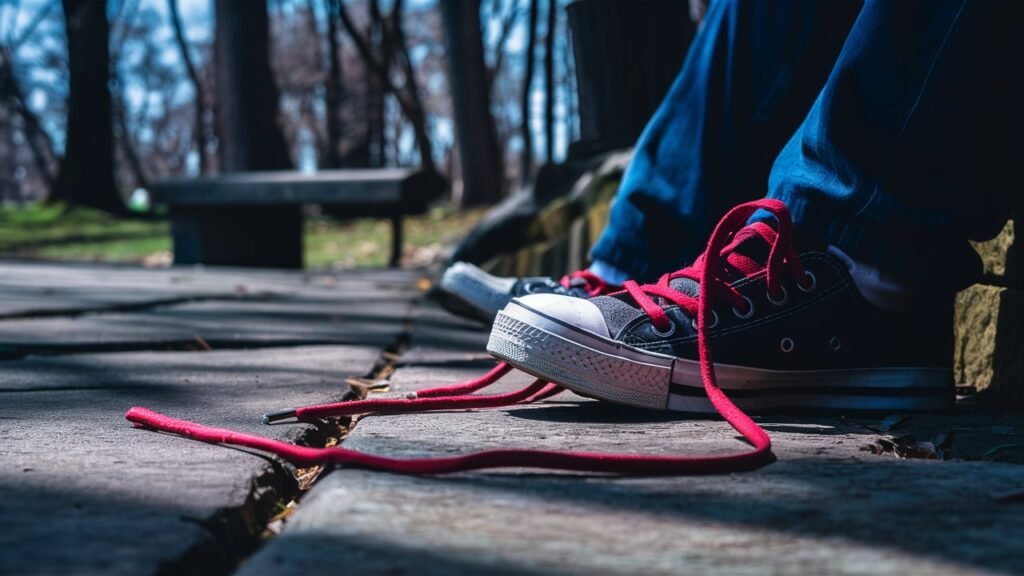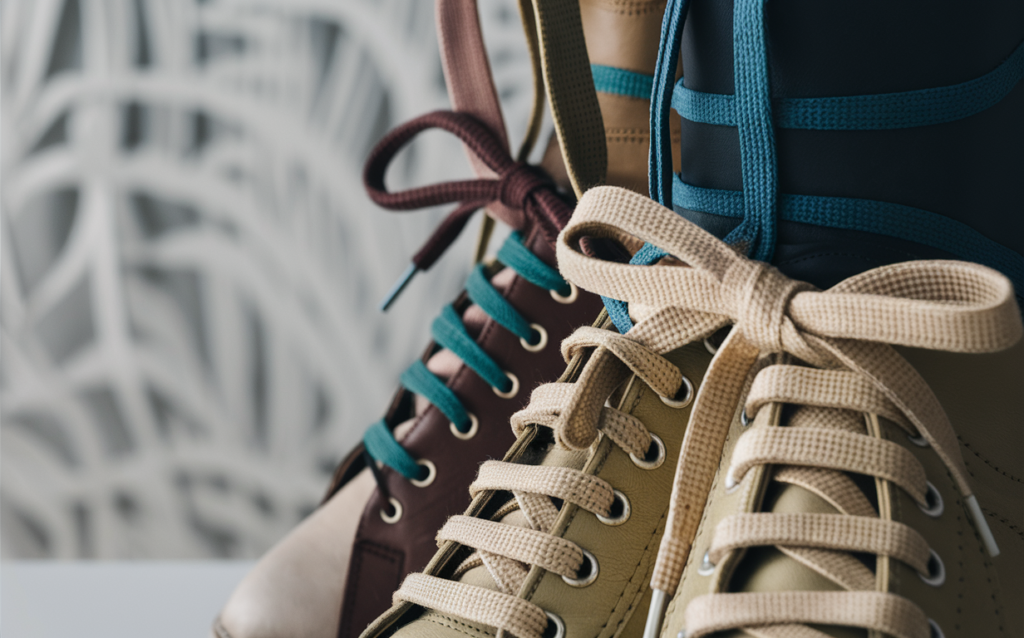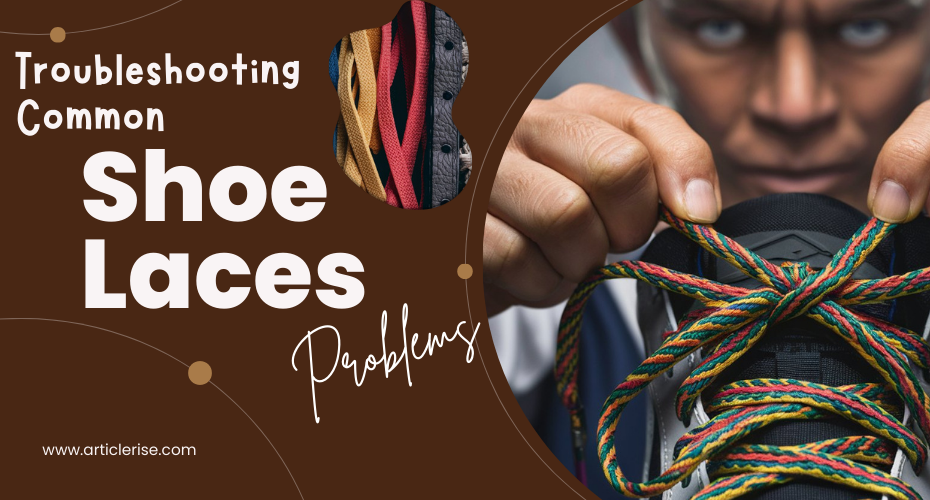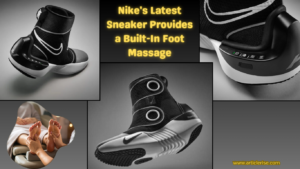Shoelaces are often taken for granted, yet they play a vital role in the comfort, stability, and functionality of our footwear. Despite their seemingly simple design, shoelaces can encounter a range of issues that can disrupt our daily lives. In this guide, we’ll explore the most common shoelace problems and provide practical solutions to address them effectively.
Fraying of Shoelaces
Causes of fraying
Fraying is a common problem that occurs when the fibers of the shoelace begin to unravel, compromising their integrity and appearance. This issue can be caused by various factors, including friction against the shoe eyelets, repeated bending and stretching, and poor-quality materials.
Solutions for fraying
To combat fraying, start by trimming the frayed ends of the shoelace with sharp scissors to prevent further unraveling. Additionally, applying a small amount of clear nail polish or fabric glue to the trimmed ends can help seal them and reinforce the fibers. Investing in high-quality shoelaces made from durable materials like nylon or polyester can also help prevent fraying in the long run.
Untying of shoelaces
Causes of Untying
Few things are more frustrating than constantly retying shoelaces throughout the day. Untying can occur due to various factors, including improper knotting techniques, slippery shoelace materials, and excessive movement during wear.
Solutions for untying
To prevent shoelaces from untying, consider using alternative knotting techniques that are more secure and resistant to slipping, such as the double knot or surgeon’s knot. Additionally, opting for shoelaces with textured or grippy surfaces can provide better traction and stability, reducing the likelihood of untying them.

Breaking of shoelaces
Reasons for Breaking
A broken shoelace can leave you stranded without a means to secure your footwear. Shoelace breakage can occur unexpectedly due to factors such as excessive wear and tear, sharp edges or rough surfaces, and poor-quality materials.
Tips for Dealing with Broken Shoelaces
In the event of a broken shoelace, don’t panic. Temporary solutions include tying the broken ends together with a secure knot or using a makeshift lace made from string or twine. For a more permanent fix, consider replacing the broken lace with a new one made from high-quality materials like nylon or polyester.
Slipping of Shoelaces
Causes of Slipping
Slipping shoelaces can compromise the stability and security of your footwear, leading to discomfort and potential accidents. This problem can be caused by factors such as smooth or slippery lace materials, inadequate tension, and improper lacing techniques.
Preventive Measures for Slipping
To prevent shoelaces from slipping, choose lace materials with textured or grippy surfaces, such as cotton or polyester. Additionally, ensure that you maintain adequate tension while tying your shoelaces, avoiding overly tight or loose knots that can compromise their security. Experiment with different lacing techniques, such as the heel lock or ladder lacing, to enhance grip and stability.

Difficulty in Tying Shoelaces
Reasons for Difficulty
Tying shoelaces may seem like a simple task, but for some, it can be a struggle. Difficulty in tying shoelaces can stem from factors such as lack of dexterity, improper knotting techniques, and physical limitations.
Techniques for Easier Tying
To facilitate easier tying of shoelaces, consider using adaptive devices or aids, such as elastic shoelaces or magnetic closures, which eliminate the need for manual tying altogether. Additionally, practice proper lace tension and alignment to ensure that the knots remain stable and secure throughout wear.
Inadequate Length of Shoelaces
Effects of Inadequate Length
Shoelaces that are too short or too long can cause discomfort and compromise the functionality of your footwear. Short laces may make it difficult to tie secure knots, while long laces can become tangled or pose tripping hazards.
Solutions for Inadequate Length
To ensure optimal lace length, measure the existing shoelaces against the shoe’s eyelets and lace holes, ensuring that they provide adequate coverage without being too tight or too loose. If the shoelaces are too short, consider replacing them with longer ones or investing in lace extenders or adapters that allow for adjustable length. Conversely, if the shoelaces are too long, experiment with different lacing techniques to minimize tangling and tripping hazards.
Poor-quality materials
Impact of Low-Quality Materials
Shoelaces made from low-quality materials are more prone to fraying, breaking, and slipping, compromising the overall integrity and functionality of your footwear. These materials lack the strength, resilience, and durability required to withstand the demands of daily wear.
Choosing High-Quality Shoelaces
When selecting shoelaces, opt for high-quality materials like nylon, polyester, or Kevlar, which offer superior strength, durability, and resistance to abrasion and moisture. Additionally, consider factors such as weave density, thickness, and texture, which can further enhance the functionality and aesthetics of the shoelaces.

Incorrect tying techniques
Consequences of Incorrect Techniques
Improper tying techniques can result in loose, unstable knots that are prone to untying and slipping, compromising the overall security and stability of your footwear. Common mistakes include using the bunny ears or loop and swoop method, which creates weak knots that are easily undone by movement and friction.
Learning Proper Techniques
To ensure secure and stable shoelace ties, learn and practice proper knot-tying methods, such as the square knot or surgeon’s knot, which involve crossing the lace ends in opposite directions and cinching them tightly to create a secure hold. Additionally, pay attention to lace tension and alignment, ensuring that the knots are snug and centered for optimal performance.
Excessive Wear and Tear
Signs of wear and tear
Daily wear and tear can take a toll on shoelaces, causing them to deteriorate prematurely and compromise their functionality and aesthetics. Signs of wear and tear include fraying, stretching, fading, and loss of elasticity, which can detract from the overall appearance and performance of the shoelaces.
Strategies for Minimizing Wear and Tear
To prolong the lifespan of your shoelaces, take proactive measures to minimize wear and tear, such as rotating between multiple pairs of shoes to distribute the workload evenly and reduce strain on individual pairs. Additionally, avoid subjecting your shoelaces to excessive friction, moisture, or harsh chemicals, as these factors can accelerate deterioration and weaken the fibers.
Improper shoe fit
Effects of Improper Fit
Ill-fitting shoes can place undue stress on shoelaces, leading to premature wear and tear and compromising their overall integrity and performance. Factors such as improper sizing, inadequate support, and structural defects can contribute to discomfort, instability, and excessive movement during wear, exacerbating shoelace problems.
Ensuring Proper Fit
To prevent shoelace problems caused by improper shoe fit, take proactive measures to ensure proper sizing, support, and comfort. Start by measuring your feet regularly using a foot measuring device or ruler to determine your accurate shoe size and width. When trying on shoes, pay attention to the fit and feel, ensuring that there is adequate room in the toe box and heel area without any pinching or discomfort.
Summary of Troubleshooting Tips
In conclusion, addressing common shoelace problems requires a combination of understanding the underlying causes and implementing practical solutions tailored to each issue. By taking proactive measures to prevent fraying, untying, breaking, slipping, difficulty in tying, inadequate lace length, poor quality materials, incorrect tying techniques, excessive wear and tear, and improper shoe fit, you can prolong the lifespan and functionality of your shoelaces and enjoy a more comfortable and secure footwear experience. Remember to inspect your shoelaces regularly for signs of wear and tear, replace them as needed, and practice proper maintenance techniques to ensure optimal performance. With these tips in mind, you can tackle shoelace problems with confidence and keep your kicks looking and feeling their best.







